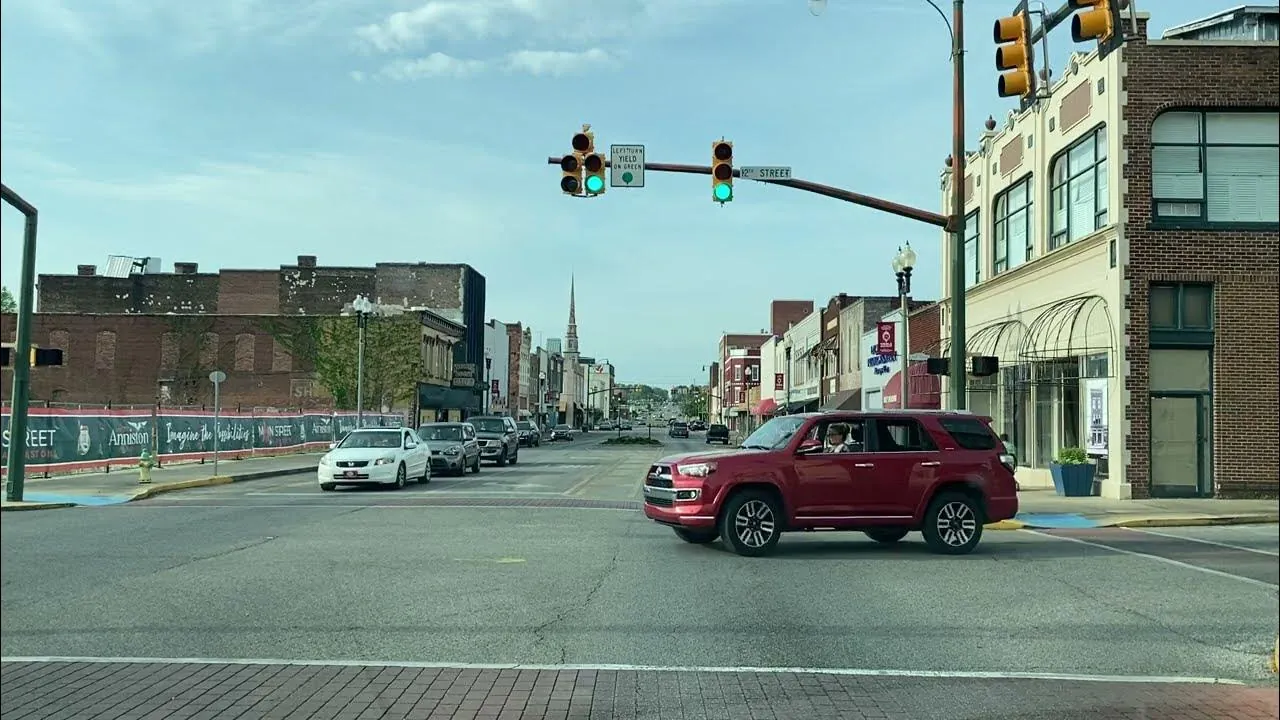Alabama, known for its rolling hills, rich history, and friendly charm, holds a startling secret within its borders: Anniston, a city notorious for being the most dangerous neighborhood in the state. Nestled in the northeastern corner, this town of 22,400 souls casts a long shadow of violent crime, casting a pall over lives and reputations alike.
Grim Statistics: A Stark Reality
travelsafe-abroad.com, a website dedicated to international travel safety, paints a grim picture. Anniston sits atop their list of Alabama’s most dangerous cities, its crown a chilling symbol of hardship and instability. The statistics speak volumes: a violent crime rate of 2,992 per 100,000 people, a staggering 68% higher than the national average. It’s as if crime lurks around every corner, a malevolent presence stalking even with a visible police patrol. The odds are stark: every resident and visitor carries a 1 in 10 chance of becoming a victim. This is not merely a statistic; it’s a lived reality, a constant echo of danger in the everyday hum of Anniston.
Digging Deeper: The Roots of Unrest
What breeds such a breeding ground for violence? The answer lies in a tangled web of socioeconomic woes. Anniston’s history, once tied to the textile industry, now bears the scars of economic decline. Factories shut down, jobs disappeared, and poverty took root. Disenfranchisement and despair became the norm, fertile ground for crime to flourish.
The lack of economic opportunities fuels a vicious cycle. With limited pathways to legitimate success, desperate individuals turn to illegal means. Gangs prey on vulnerable youth, offering a fleeting sense of belonging and power in exchange for loyalty and participation in criminal activities. Drugs become a quick escape from the harsh realities of their lives, a temporary numbing agent for the pain of poverty and neglect.
Beyond the Headlines: Human Stories Behind the Numbers
But statistics and analyses only tell part of the story. Behind the numbers lie human faces, individuals caught in the maelstrom of violence. The single mother struggling to raise her children amidst constant fear. The young man, trapped in the cycle of gang life, yearning for a different path. The elderly couple, robbed of their sense of security in their own home. These are not mere characters in a dystopian novel; they are the living, breathing residents of Anniston, bearing the brunt of a broken system.
A Glimmer of Hope: Fighting Back Against the Darkness
Despite the overwhelming challenges, whispers of hope rise from the shadows. Community organizations, fueled by unwavering dedication, work tirelessly to mend the torn fabric of society. They offer educational programs, job training initiatives, and mentorship programs, striving to provide vulnerable youth with avenues for a brighter future. Local heroes, often themselves victims of the city’s struggles, dedicate their lives to fighting back against the darkness.
However, their efforts require unwavering support. Increased government investment in social programs, community policing initiatives that foster trust, and economic development projects that create sustainable jobs are crucial to break the cycle of violence and poverty. Only through a collaborative effort, fueled by compassion and a commitment to systemic change, can Anniston rise from the ashes and forge a safer future for its residents.
FAQ’s:
1. Why is Anniston considered the most dangerous neighborhood in Alabama?
Anniston has a significantly higher violent crime rate than the national average, with a 1 in 10 chance of becoming a victim. This is attributed to a complex interplay of factors like poverty, lack of economic opportunities, and gang activity.
2. What are the main types of crime in Anniston?
Violent crimes like assault, robbery, and homicide are prevalent in Anniston. Property crimes like burglary and theft are also common.
3. Are there safe areas in Anniston?
While specific crime rates vary across the city, no area is entirely immune to crime. However, some neighborhoods report lower crime rates than others. It’s important to be vigilant and take precautions regardless of location.
4. What can I do to stay safe in Anniston?
- Be aware of your surroundings and avoid walking alone at night.
- Stick to well-lit and populated areas.
- Trust your instincts and avoid suspicious situations.
- Keep valuables out of sight and report any suspicious activity to the police.
- Consider taking self-defense classes.
Conclusion: A Call to Action
Anniston is a stark reminder that the shadows don’t always lurk in foreign lands or war-torn regions. Sometimes, they reside right in our backyards, hidden behind seemingly ordinary facades. Ignoring the plight of Anniston is not an option; it’s a tacit acceptance of despair and a betrayal of our shared humanity. By acknowledging the complexities of the situation, supporting local efforts, and advocating for systemic change, we can help Anniston step out of the darkness and into the light. After all, no city, no neighborhood, no life should be left behind in the shadows.
Disclaimer:
The information presented in this article and associated FAQs regarding Anniston, Alabama, is intended for informational purposes only and should not be interpreted as professional advice or a guarantee of safety. The crime rates and statistics included are based on readily available data and may not reflect the current situation in all areas of the city.
Visiting any location, including Anniston, involves inherent risks, and individuals should conduct their own research and exercise caution when making travel decisions. The author and publisher of this material do not assume any responsibility for any harm or loss resulting from the use of this information.
It is essential to remember that Anniston is a diverse community with many law-abiding citizens. The purpose of this content is not to stigmatize or generalize about the entire population but to highlight the complex challenges faced by the city and encourage informed decisions from visitors and residents alike.
Always prioritize your safety and well-being when traveling and seek official updates and guidance from relevant authorities before visiting any location.

